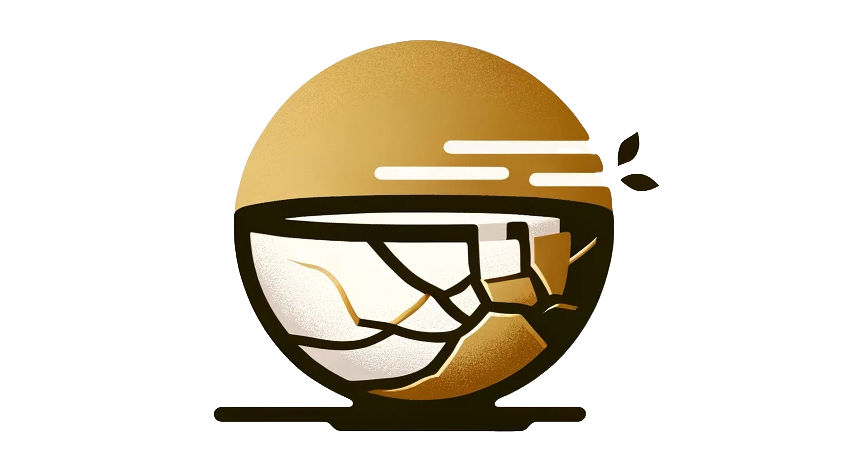KISS Principle
The Keep it simple, stupid principle is generally a solid and tested rule of thumb in design. Personally, I like simple designs because they tend to be more elegant and intuitive – with fewer issues.
When it comes to social media tools, Twitter holds a special spot for me. A business or brand that is trying to drum up brand awareness can effectively use 140 characters like many of us use spice. It takes very little spice to make all the difference in how that special dish turns out. A little dash of this or that can turn an otherwise bland meal into the most memorable experience talked about long after it’s been consumed.
It turns out that a tweet offers just enough zest to a brand message that it differs significantly from the flavor found on other social platforms. Tweets are simple things. The 140 character limit requires that our message be short and too the point. However, within that 140 character limit, so much can be accomplished.
Toss in a little wit, a bit of personality, and a smile (sometimes even a frown) as you tweet. Then click on the tweet button. Let it go and basically forget about it.
Although a tweet can contain a link to your site, maybe a link to a useful article, or even an uploaded photo, the most entertaining and often useful tweets in my opinion are just plain text snippets of thoughts.
Don’t worry about getting retweeted or fav’d. Someone may like your post and share it with their followers as a retweet. They may just star/fav your tweet to show that they like what you tweeted. The best tweeters aren’t concerned with these things though. They tend to tweet for the joy of sharing something, personal or useful, and then move on with their life.
Of course, you want to keep your eye on the @ Connect menu item when you log into Twitter. This will indicate if someone may have connected with you by a retweet, fav, or simply started following you.
The value of plain text tweets should never be underestimated.
There are many of us who will go to Twitter first to see what your business is doing. We turn to Twitter because it is quick and doesn’t require a lot of investment to learn something more about your story.
We may not always engage with your brand’s tweets, but never assume that your tweets are not being read simply because you haven’t received a retweet or fav.
Use Twitter Search
Don’t expect the same level of conversation as you might find on Facebook. However, you can find and join conversations that are relevant to you much more easily. Just type in a keyword or two into Twitter’s search box and watch your page fill up with tweets about your topic. Find an interesting tweet and click on the reply button (hover over a tweet at twitter.com and see this button appear). Then add your personal thoughts.
On Twitter, no one really minds you popping into a conversation. I’ve never experienced a “What are you doing here?” moment. You’ll probably get a reply back in fact, as long as you keep it real.
If someone didn’t want you popping into a conversation, their account would be private.
Twitter works best though because most make their accounts public. It’s how we find out what’s happening now or what’s literally breaking now. Personally, I’ve found the the most breaking news on Twitter first than from any other place on the web. There’s something surreal about learning of a historical event that just happened seconds ago half-way around the world. Reading tweets from regular folks who are experiencing something important (or trivial) can offer much insight for a business, brand or individual.
Twitter search is just one of the best ways to track important and trivial events and topics. If you use Twitter.com, you can save a search by clicking on the gear icon on the right side of the header, “Results for [your term]”. There’s a save search option in the drop down menu that appears.
I use Twitter search to follow social media and web site trends. I use it to determine if I’m the only one experiencing a bug with a product or service. I use it to learn what others are tweeting about for the next movie I want to see. I use it all of the time!
What About Privacy?
As I mentioned, Twitter works best as an open platform. Tweets flow by quickly and are generally forgotten. However, anyone can search and pull up a tweet if your account is open. Knowing that information is public, means that you accept the fact that you are your own filter. You choose what you want to post. You can supply as much or as little detail as you want within a tweet.
Other platforms which make claims of privacy have often disappointed users along the path of ad monetization. What we go to bed with as private one day, we can wake up with as public or 3rd party shared the next.
Twitter, is what it is – a mostly open stream of characters flowing down timelines for entertainment, information sharing, or if you’re like me, a bit of a journal that can be a kick-off point for products, blogs or simply a place to release a little steam.
Again, we are our own filters. We don’t have to worry about Twitter exposing our tweets since they’re already out there.
The Simple Part
Plain text is very simple. A few words can say a lot. When others want to learn more about you, you’re previous tweets will provide them with an idea about what your business or brand is like. You may not get a follow, fav or reply, but never underestimate the power of a small tweet sitting out there in the Twitterverse.
The 140 character limit allows us to easily scan tweets quickly while narrowing in ones that are of personal interest. It’s something not replicated on Facebook or Google+. Where other platforms encourage and desire you to post long comments and media such as photos or videos, Twitter works because of its limits. It’s so easy for someone to post a quick thought on Twitter rather than post to another platform which takes greater investment in time and thought. The lower barrier for tweeting makes it an ideal choice.
Some believe that you have to think more to post something within 140 characters. I’ve never had this problem though. Posting quickly and on the go is easily learned – as well as the shortcuts and lingo of Twitter. Being yourself and posting something that’s of interest to you really helps.
These days, adding a photo to Twitter is easy enough too.
If your business or brand is using only Facebook, then it’s really time to add Twitter to the mix. There aren’t any rules for Twitter even though some guru’s like to tell you that you have to do it a certain way.
My personal way of tweeting may not be your way, but always treat Twitter as a unique place. It’s never a good idea to auto-post content from another platform to Twitter in the fashion of a Facebook status update to a tweet. Twitter is not Facebook and the audience (even if they use both) does not want to see cut off tweets or re-purposed syndicated content.
Twitter Listens Better
Now as a company, Twitter makes decisions at times which upsets the Twitterverse. API, infrastructure and UI changes have upset developers and users. However, this happens with any company. When the boat is upset, it’s how it regains its balance that really sets a company apart from the rest at sea though.
I’ve lived through product decision mishaps on all three of the major social platforms. You probably have too as a user of Facebook, Google+ or Twitter. Because of my product background, I tend to measure things weighted from a product management perspective. I often wonder about the insider decision process that leads to product changes and feature rollouts. I especially wonder about things when the user experience has been upset to the point that everyone is crying out with one loud voice, “WHY?!”
My personal feeling is that Twitter does a better job at listening to the community. It hasn’t always communicated well with users when a mishap occurs. Twitter though always gives me the impression that it’s a company willing to adjust the sails when the outcry is of one voice.
The developer community may disagree with this view at times – I get that. To its credit, Twitter has recently provided advance warning when big changes would affect developers.
For users, when Twitter rolled out things like the Quickbar and Conversations (a.k.a. blue lines), the userbase was not very pleased. The Quickbar was removed shortly after its introduction.
Today, Twitter appears to have taken pause with the “blue line” feature. I’m sure that Twitter wanted to surface tweets that were part of conversations, more effectively. To the left side, they added a blue line that connected the profile image of an original tweet with another tweet that was a reply to it. When a tweet received a reply, it was bumped up in the timeline. The intent was probably a good one, but it wasn’t carefully thought out. Tweeters who were constantly engaged in conversations, originating tweets and receiving replies, or replying to other’s tweets as part of conversations, saw their timelines flooded with these blue lined convos, conversation groupings that were continually being bumped up in the timeline (TL).
The problem is that it caused lots of confusion. It wasn’t an intuitive solution. It forced users to re-read tweets since the prior original tweet was included in the bumped up blue lined convo. Worse, it took up a huge chunk of real estate. On my MacBook Air, the minimum conversation took up over 40% of my displayable tweet area. It probably took up at least 50% or more of the display on an iPhone (not tested but I’ve seen screenshots). I avoided the iOS update to stay away from the blue lines.
The “blue line” user experience was not consistent. It only affected the main timeline and not even across all Twitter products.
The other problem is that it interfered with what Twitter was best at – a reverse chronological display of individual tweets that required very little effort to quickly scan. We were used to going to the top of our timelines and seeing the most recent tweets before the “blue line” rollout. The mixing of reverse chronological display with chronological display didn’t look too well.
Another problem is that we could already expand / view conversations with a click. When a reply showed up in our timeline, if we wanted context, it was just one layer deep and quickly discoverable. It basically provided an opt-in approach to viewing a conversation. The “blue line” approach made it all mandatory though with no opt-out feature. The feature failed to acknowledge this fact as put forth by one tweeter, “The blue lines are because they think we’re stupid. This isn’t Facebook, we’re actually functional human beings out here.” In other words, we were doing quite well keeping track of our conversations and replies in the timeline. Even if we forgot what was going on, we could just expand a tweet with one step.
I’m highlighting this not to convey what a bad product decision looks like, but to give credit to Twitter for apparently putting this on pause. The “blue line” feature, Conversations, was announced on a Wednesday. By Saturday, it appeared to have been disabled at twitter.com. Then for some reason it reappeared. By Monday, it was gone again. I’m not sure what the root cause for this was, maybe someone will fill us in, but I’m glad that I’m not seeing the blue lines right now.
Again, I’m hoping that Twitter nixes this completely or provides an opt-out option if it returns.
The jury is still out on what Twitter’s official response is. Will the app be updated again? For now, twitter.com is nice and blue line free for me.
When it comes to Facebook or Google+, I’ve seen so many product decisions made that appear to live in a vacuum completely unaffected by how users feel. It can take months, if at all, for user complaints to get addressed by Google or Facebook. I offer you users who have complained about Google’s real name policy (#nymwars) and Facebook’s privacy issues (although leadership claimed privacy is dead and users need to be more open, Facebook finally began adding privacy settings and addressing 3rd party sharing as well as leaking of personal data) as examples of early decisions that have left brands with unnecessary bad images. When a bad product decision is made at Google or Facebook, I never expect user complaints to be addressed quickly or at all. It’s the reputation they’ve earned.
Twitter on the other hand, is at least willing to adjust it’s position when users are upset. Sometimes it hasn’t, but overall I feel that Twitter has greater respect for its users.
I feel that Twitter wants to do the right thing for users. Of course it has business goals, but I feel better tweeting than giving my data to other platforms.
Twitter’s ability to change a product decision as quickly as a few days means that it can be humble. It gets it. It gets my tweets too.
I use most of the social platforms as part of everyday business, but Twitter earns my respect more than the other companies.
140 characters work for me and I hope that you consider Twitter as a partner for your business and branding social media needs.
If you need a little help setting things up, feel free to give me a holler or a tweet.


